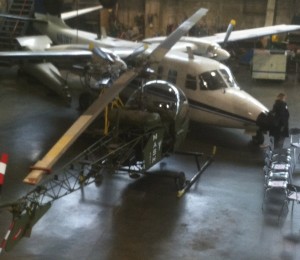Last week I had the opportunity to tag along as the Secretary of Education, Arne Duncan, visited Aviation High School in Long Island City. He was there to highlight the school as a model for preparing students to become both career and college ready. You can read about more about the visit in my post on the Department of Education’s blog.
What struck me about the school (besides how neat it was to see the planes up close) was how engaged and motivated the students were as they talked about repairing planes and interning for businesses at nearby airports.
The students talked about how their aviation classes helped them perform better in traditional classes like physics and math, which made perfect sense to me. In the case of this particular high school, it certainly was the case.
However, I wanted to see what the research had to say, in general, about career and technical education classes and their impact on math achievement.
As is often the case, the research paints a more complicated picture. Many high school students, including ones who are enrolled in career and technical courses, do not graduate with the math skills necessary for the workplace or for college.
A group of researches (Stone, Alfred & Pearson, 2008) argued that while career and technical courses hold potential for improving math skills, the math that is being used in these courses is not always being made explicit.
They set out to test what would happen if teachers of technical classes (who are not usually trained as math teachers) made the math explicit. For example, what if the shop teacher talked explicitly about the Pythagorean theorem during a lesson on the T-square in carpentry class?
They found that when technical and math teachers worked together to make the math explicit in these courses, students performed better on traditional and college placement math tests. In addition, this type of intervention did not negatively affect their content knowledge in their occupational areas.
If I had to guess what was going on in Aviation High School, my guess would be that it is something similar to what the researchers proposed in their intervention. But I think it’s important to note that while engaging students in hands-on activities and real world situations is part of the story, it’s not the whole story. How to best connect mathematics and real world learning needs to be thoughtfully considered.
Want to know more?
You can read more about what the students had to say during Secretary Duncan’s visit in my post on Homeroom, the Department of Education’s official blog.
Read the research: Stone, J. R., Alfeld, C., & Pearson, D. (2008). Rigor and relevance: Enhancing high school students’ math skills through career and technical education. American Educational Research Journal, 45(3), 767-795.
